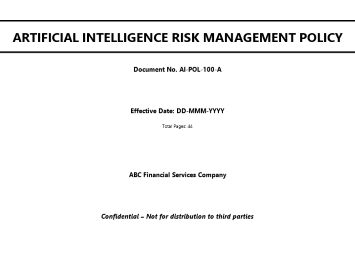In the current fast-paced and adaptable landscape, the need for efficient risk management has never been more important. As entities face a variety of challenges including threats to cybersecurity to regulatory compliance issues, the conventional methods of risk assessment are frequently insufficient. Enter the AI-powered risk assessment generator, a groundbreaking tool that leverages advanced technology to streamline the process of detecting and mitigating risks.
These generators harness the power of AI to process vast amounts of data, providing insights and assessments that are both precise and prompt. By automating the risk assessment process, organizations can not just conserve precious time and resources but also improve their overall safety nets. ai risk assessment generator allows organizations to proactively tackle potential threats and vulnerabilities, ultimately leading to more informed decision-making and a more robust, more dependable operation.
Comprehending Artificial Intelligence Risk Assessment Systems
AI evaluation tools are advanced tools that employ AI to evaluate potential risks in various domains. These generators utilize algorithms and data analysis to detect, scrutinize, and organize risks based on particular criteria. By simplifying the risk assessment process, organizations can efficiently gather insights that would normally require significant manual effort and time.

The main advantage of an AI risk assessment generator lies in its ability to handle large quantities of data rapidly and correctly. Traditional risk assessment methods generally rely on individual opinion, which can be biased and prone to errors. In comparison, AI-powered systems can interpret historical data, present trends, and forecasting modeling to offer a more objective view of risks. This data-driven approach not only enhances accuracy but also improves decision-making capabilities.
Additionally, AI risk assessment generators are flexible and can be modified to fit the unique needs of various industries. Be it employed in finance, healthcare, or manufacturing, these tools can adjust their algorithms to tackle specific risk factors relevant to each sector. This versatility enables organizations to stay ahead of potential threats and create more stronger safety nets, ultimately leading to better risk management outcomes.
Advantages of AI-Enhanced Risk Assessment
One of the primary advantages of an artificial intelligence risk assessment generator is its capability to handle and analyze vast amounts of data quickly. Conventional risk assessment methods often utilize manual analysis and expert input, which can be time-consuming and prone to human error. In contrast, AI systems can combine data from various sources, identifying patterns and trends that may not be easily visible to human analysts. This ability enables organizations to make well-informed decisions based on thorough insights, significantly enhancing the overall risk management process.
Another notable benefit is the customization that AI risk assessment generators offer. These systems can be tailored to meet the specific needs of different industries and organizations. By factoring in the distinct risk profiles and operational nuances of a business, AI creates more pertinent and precise assessments. This level of tailoring not only augments the efficacy of risk management strategies but also ensures that organizations are more prepared to predict and lessen potential risks that are particular to their context.
Lastly, AI-enhanced risk assessment provides organizations with the ability to constantly learn and adapt. As new data becomes available and the business landscape evolves, AI systems can refresh their algorithms and risk models to reflect the most current conditions and trends. This flexible nature of AI allows organizations to maintain a forward-thinking approach to risk management, ensuring that they stay ahead of emerging threats and vulnerabilities. By leveraging continuous improvement, businesses can boost their resilience and refine their risk mitigation strategies over time.
Upcoming Trends in Threat Management Tech
As entities more and more rely on AI threat evaluation tools, we can foresee a major change to more dynamic and real-time threat control solutions. Conventional risk assessment processes can be inefficient and often lag the rapid pace of change in the current business climates. AI-powered tools are evolving to provide instant feedback and analysis, enabling companies to respond proactively to possible threats rather than responding post the fact. This transformation improves decision-making processes, as executives are provided with prompt and data-informed information to guide their strategies.
Another trend is the increasing merger of AI risk assessment tools with other business analytics and operational tools. As these tools become increasingly linked, companies can gain a complete view of risk that encompasses multiple elements, including industry trends, compliance changes, and functional weaknesses. This holistic methodology not only streamlines threat management but also fosters collaboration across teams, guaranteeing that all stakeholders are on the same page in tackling possible risks. As a result, organizations can distribute assets more efficiently and prioritize initiatives that bolster their total resilience.
Moreover, advancements in machine intelligence and information analysis will allow AI threat evaluation generators to consistently enhance their precision over time. By gaining knowledge from previous occurrences and analyzing vast amounts of information, these tools will become more adept at detecting upcoming threats and predicting their possible effects. Organizations will increasingly depend on these predictive capabilities to enhance their strategic planning and emergency response efforts, moving past a responsive stance to a more forward-looking and long-term approach to risk control.
